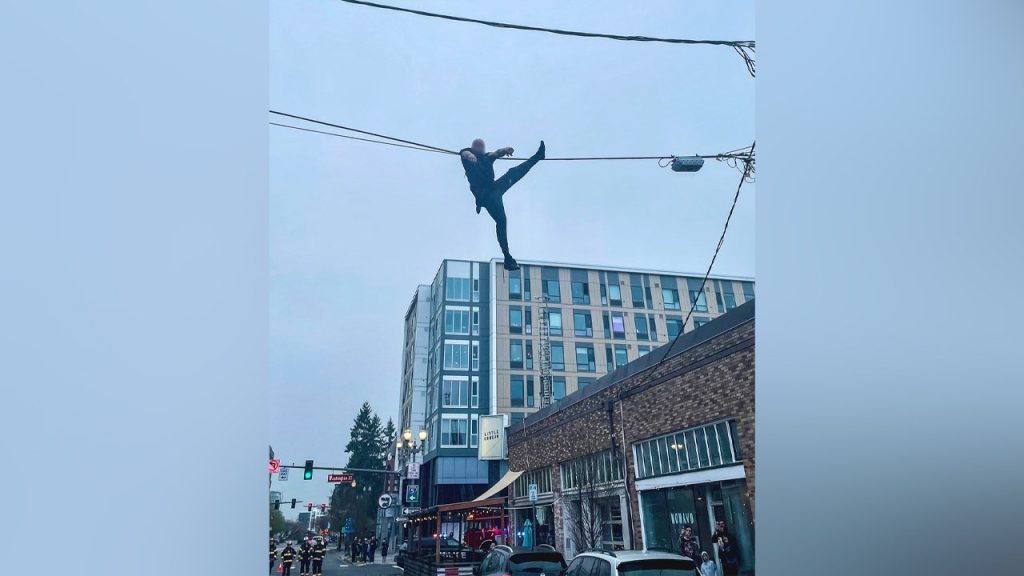A thief in Washington state led police on a lengthy chase before getting stuck on a telephone wire high above the ground. The incident began when the suspect broke into a vehicle, stole several items, and then stole a bike from a nearby yard. The suspect, later identified as Romando E. Stanley, was chased by a neighbor after the bike theft and fled on foot. Police received reports of Stanley entering a business, stealing an employee’s cell phone, and punching the employee before fleeing.
As police responded to these incidents, additional reports came in of Stanley climbing onto a roof and throwing bricks onto the sidewalk, causing damage to several buildings. Crisis negotiators attempted to coax Stanley down from the roof, but he eventually attempted to cross the street using telephone wires and held on for approximately 45 minutes. To prevent him from falling onto the street, a Vancouver Fire engine was positioned underneath him. Stanley eventually lost his grip on the wires and fell onto the fire engine, where he was taken into custody.
Following an evaluation at the hospital, Stanley was booked into the Clark County Jail on charges of Robbery II, Theft II, Theft III, and Malicious Mischief. The Vancouver Police Department and crisis negotiators worked to safely resolve the situation, with the Vancouver Fire Department also involved in ensuring Stanley did not suffer any serious injuries during the fall. Stanley’s reckless actions led to property damage and multiple criminal charges, highlighting the dangers and consequences of engaging in criminal behavior.
The incident involving Romando E. Stanley serves as a dramatic example of a criminal leading law enforcement on a dangerous chase through a residential area. Stanley’s actions, from breaking into a vehicle and stealing items to climbing onto a roof and throwing bricks, posed a threat to the community and resulted in serious charges being filed against him. The involvement of crisis negotiators and the fire department demonstrates the importance of coordinating efforts to safely resolve potentially dangerous situations involving suspects who are in distress or acting erratically.
The case of Romando E. Stanley underscores the challenges faced by law enforcement officers in dealing with suspects who engage in reckless and dangerous behavior. Despite the efforts of crisis negotiators to persuade Stanley to come down from the roof safely, he chose to traverse a telephone wire, putting himself at risk of serious injury or death. The response by the Vancouver Fire Department to position a fire engine underneath him reflects a coordinated effort to prevent harm to Stanley and ensure his safe apprehension.
The aftermath of the incident, which resulted in Stanley being booked into jail on multiple charges, highlights the serious consequences of criminal behavior. Stanley’s actions, which included theft, assault, property damage, and reckless endangerment, led to his arrest and detention. The incident serves as a reminder of the importance of community members remaining vigilant and reporting suspicious activity to law enforcement, as well as the need for effective crisis intervention techniques to safely de-escalate potentially volatile situations involving suspects in crisis.
In conclusion, the case of Romando E. Stanley’s high-altitude chase and subsequent arrest by the Vancouver Police Department illustrates the risks and consequences associated with engaging in criminal behavior. Stanley’s reckless actions not only put himself in danger but also posed a threat to the community and property in the area. The coordinated response by law enforcement, crisis negotiators, and the fire department demonstrates the importance of working together to ensure the safety of both suspects and the public in such situations.


